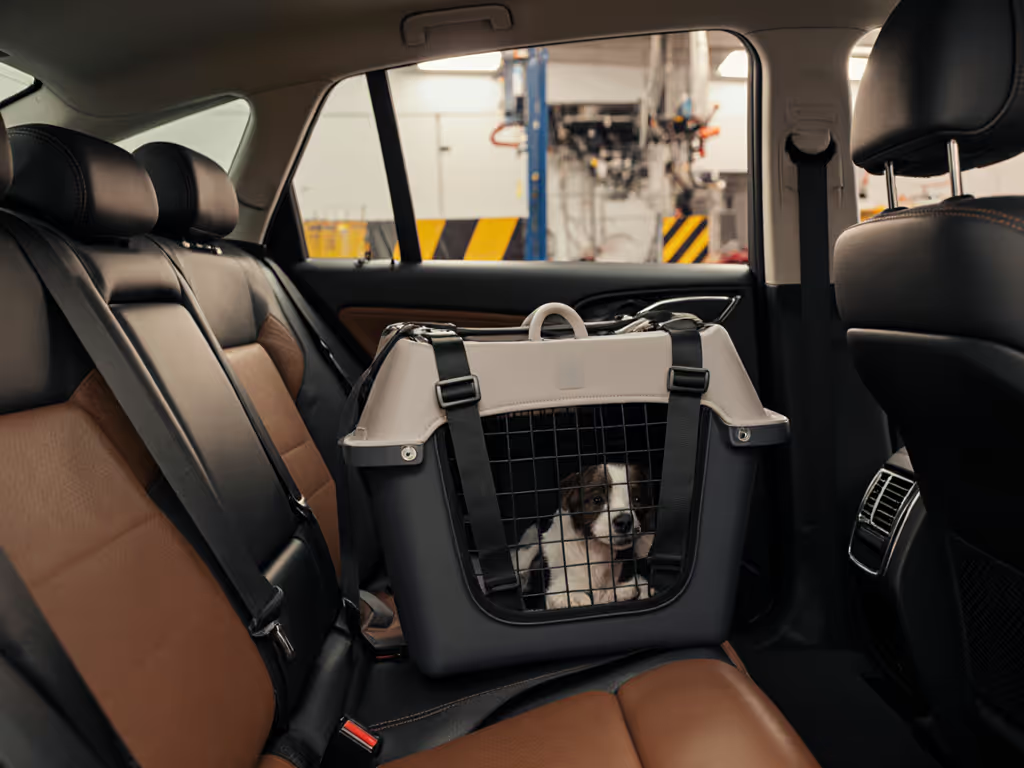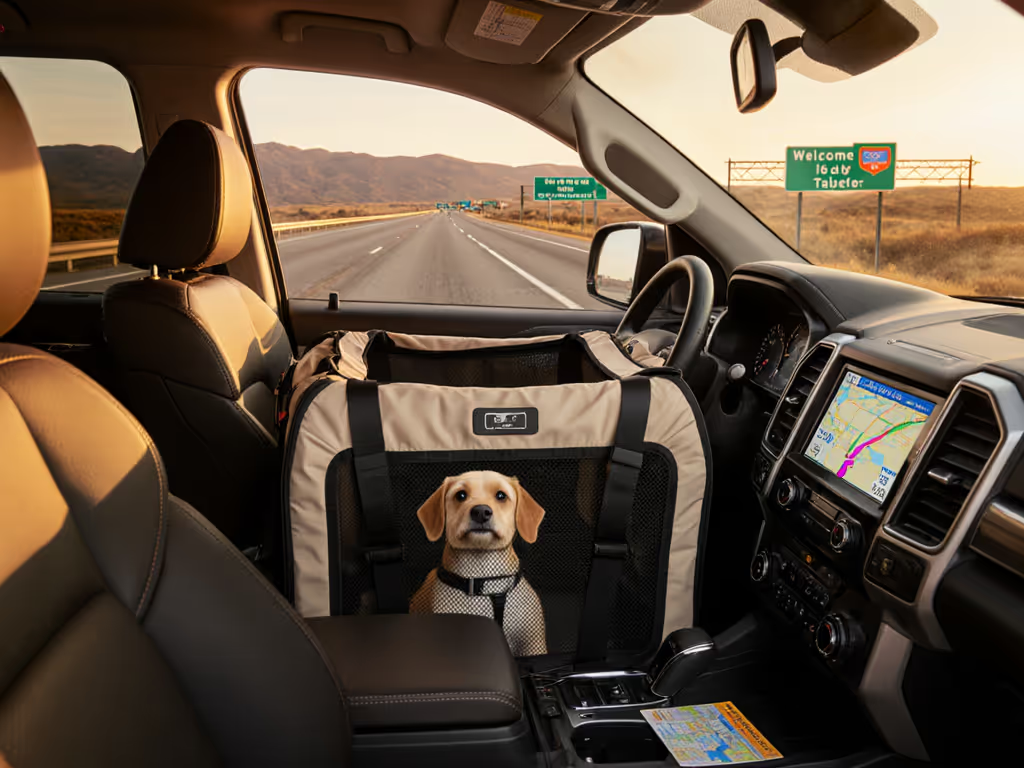
Car Travel Pet Carriers: Safety vs Convenience
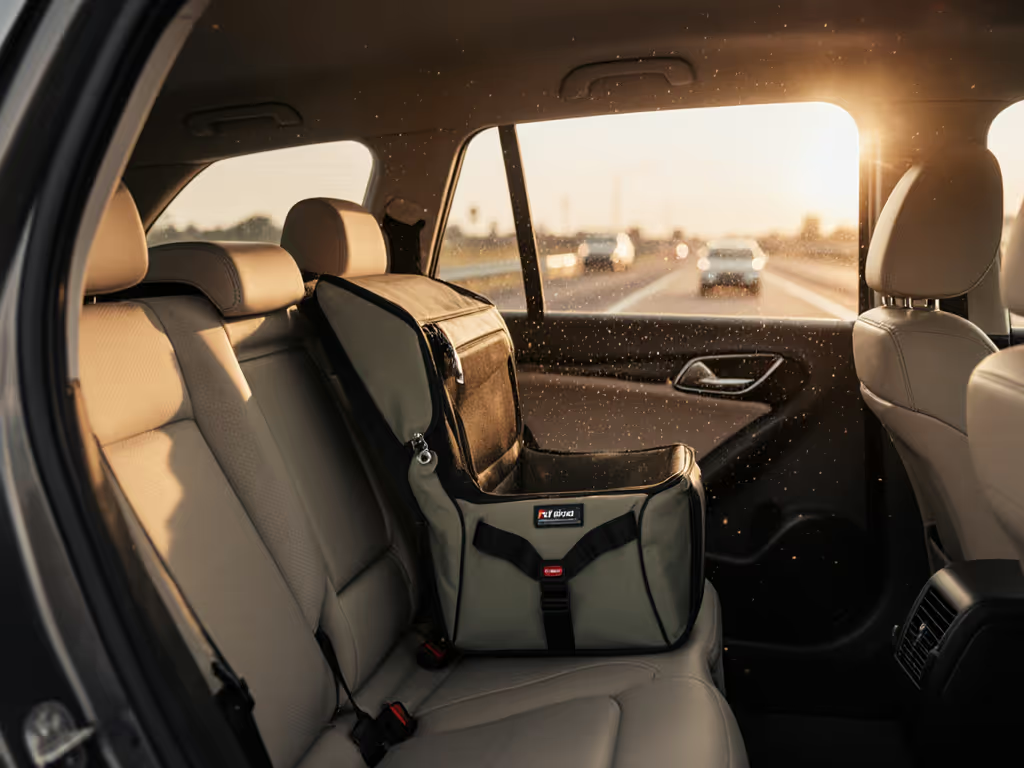
As a pet owner who travels frequently, you've likely wrestled with the central tension in modern travel pet carriers: how to balance genuine safety requirements with the convenience of designs that fit seamlessly into your life. The right travel pet carrier shouldn't scream "pet baggage" but should instead pass the critical rule-checked dimensions that matter most at 30,000 feet or on the highway. After years of analyzing how pets move through transit ecosystems, I've learned that true convenience emerges only when safety fundamentals are non-negotiable. Blend in visually, stand out in quiet function.
Why the Safety vs Convenience Debate Matters More Than You Think
What's the fundamental difference between safety-focused and convenience-focused travel pet carriers?
Most travelers don't realize they're making a binary choice between designed safety and designed convenience. Safety-focused carriers follow the same design principles I apply to capsule wardrobes: rule-checked dimensions that meet crash-testing standards (like those from the Center for Pet Safety), structural integrity that maintains shape during impact, and ventilation systems that prioritize airflow over aesthetics. Convenience-focused carriers often sacrifice these elements for portability, lightweight construction, and soft-sided flexibility that makes them airline-compliant but structurally compromised in vehicles.
The data tells a sobering story. Independent crash testing reveals that many popular soft-sided carriers collapse completely during impact simulations, offering little protection. Meanwhile, properly engineered carriers distribute forces to protect both pet and human passengers. I've watched as sleek work bags sailed past airport security while brightly colored pet carriers drew unnecessary scrutiny, proof that good design should disappear in public and deliver in use.
How do I determine whether my pet needs a crash-tested carrier or a soft-sided carrier?
This decision boils down to your primary travel mode. If traveling with pets in car constitutes 70% or more of your journeys, a crash-tested option is non-negotiable, regardless of airline compliance. For predominantly air travelers with occasional car trips, a dual-strategy works best: a certified airline carrier for flights paired with a separate car-specific system.
Consider your pet's physiology. Broad-chested small dogs, long-backed breeds like dachshunds, and senior pets with mobility issues need the structural support that only hard-sided, crash-tested carriers provide during car travel. The K&H Travel Safety Carrier exemplifies this approach with its headrest strap system and multi-exit design that accommodates various seat configurations while maintaining structural integrity.
fit-first, then finish isn't just a philosophy, it's the only metric that matters when your pet's safety hangs in the balance.
What are the hidden dimensions I should measure that most guides miss?
Pet measurement guides typically focus on length from nose to tail base and height at the withers. But the dimensions that actually determine whether your pet can breathe comfortably and move naturally in a carrier are:
- Seated shoulder height: How tall your pet stands when sitting upright (critical for headroom)
- Curl radius: The diameter of your pet's natural curled sleeping position
- Shoulder girth: Circumference behind front legs when standing
- Chin clearance: Vertical space needed when your pet rests its head on the carrier wall
Most standard size charts ignore these measurements, leading to carriers that technically fit your pet's dimensions but restrict natural postures. Instead of measuring your pet once, observe how they shift positions over 20 minutes, and note the maximum space they occupy in each common posture. This "dynamic measurement" approach accounts for how pets actually behave in carriers, not how manufacturers assume they will.
How can I reconcile car safety requirements with airline compliance?
This is where most pet travelers hit a wall. Airlines typically require soft-sided carriers under 18×11×17 inches that fit under the seat, while automotive safety demands rigid structures that often exceed these dimensions. The solution lies in recognizing that one carrier rarely serves both purposes effectively.
For frequent car travelers who occasionally fly, consider these approaches:
- Two-carrier system: A crash-tested carrier for vehicles paired with an airline-specific soft carrier
- Modular design: Some carriers like the Sleepypod Mobile Pet Bed feature removable crash-tested bases that convert to airline-compliant soft carriers
- Strategic compromises: If your car trips are short and infrequent, prioritize the airline carrier but use a seatbelt harness system (like the Sleepypod Clickit Sport) for vehicle safety
The key insight? Never compromise on crash-testing for car travel. For certified options and step-by-step setup, see our car crash-tested safety checklist. As the Center for Pet Safety's testing confirms, extension tethers and soft carriers provide negligible protection during impacts. Your pet's safety in the car shouldn't be sacrificed for the illusion of multi-mode convenience.
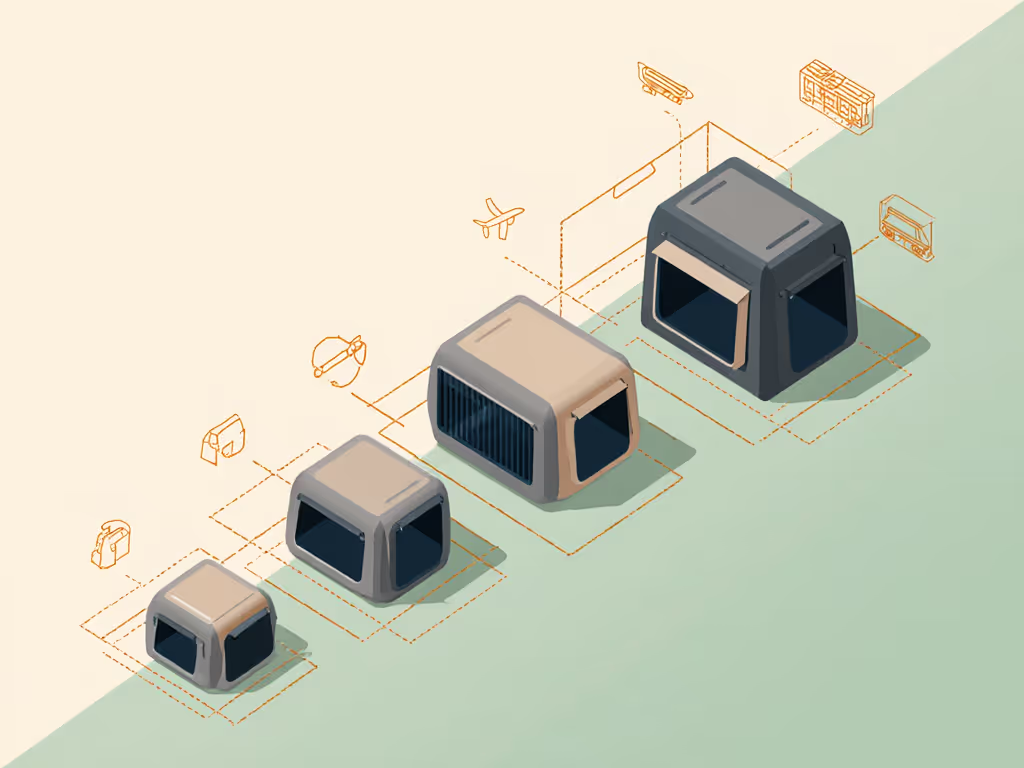
What design features truly reduce scrutiny during travel?
True travel sophistication comes from carriers that align with your existing travel aesthetic rather than fighting it. Consider these rule-checked dimensions for discretion:
- Color coordination: Neutrals that match your luggage color family (not necessarily identical)
- Hardware quality: Brushed metal or matte finishes that echo your suitcase hardware
- Proportional balance: Carriers that maintain the same width-to-height ratio as standard luggage
- Clean seam lines: Minimal visible stitching or branding that reads as "pet-specific"
- Functional integration: Trolley sleeves that work with your existing roller bag system
These elements create visual minimalism that helps your travel pet carrier disappear into your travel ecosystem. When boarding, agents don't pause to question a carrier that looks like it belongs with your luggage, because it does. This isn't about deception; it's about thoughtful design that respects the rules while minimizing unnecessary attention.
Why do some carriers that look "stylish" fail the rule-check?
Many "designer" carriers prioritize aesthetics over the hard dimensions that matter. They might feature:
- Rounded corners that exceed airline linear dimension calculations
- Decorative mesh panels that compromise structural integrity
- Novelty shapes that waste interior space despite larger external dimensions
- Fashion-forward materials that lack proper ventilation
True style in travel pet carriers emerges from adherence to functional parameters. A carrier that meets exact airline dimensions while providing optimal airflow and structural safety will always outperform one that sacrifices these elements for superficial appeal. Good design should disappear in public and deliver in use, not the other way around.
How does the "two-mode" reality affect my carrier choice?
Most pet owners operate under the false assumption that one carrier should serve all purposes. The reality is that air travel and car travel impose fundamentally different requirements:
| Requirement | Air Travel | Car Travel |
|---|---|---|
| Structural Integrity | Soft-sided preferred | Rigid, crash-tested essential |
| Dimensions | Strict linear limits | Height clearance more critical |
| Ventilation | Moderate airflow sufficient | Maximum airflow essential |
| Security | Zipper locks | Seatbelt integration |
| Portability | Lightweight priority | Stability during movement |
Attempting to optimize for both often means compromising on the critical safety elements for car travel. For frequent travelers, investing in two specialized carriers typically delivers better outcomes than one "compromise" solution that excels at neither.
What materials pass both the airport and automobile tests?
The ideal material balance for travel pet carriers combines:
- Exterior: Durable, water-resistant nylon or polyester that mimics luggage fabric
- Structure: Rigid internal frames (for car carriers) or reinforced side panels (for airline carriers)
- Mesh: Breathable, puncture-resistant materials that maintain integrity during impact
- Base: Non-slip, washable surfaces that contain accidents without compromising stability
- Hardware: Automotive-grade buckles and zippers that withstand repeated use
Avoid carriers that use:
- Thin mesh that distorts under pressure
- Plastic components that become brittle in temperature extremes
- Decorative elements that compromise structural integrity
- Upholstery fabrics that trap odors
Materials science matters more than most shoppers realize, especially when your pet's comfort and safety depend on them performing under stress.
Final Considerations for Discerning Travelers
Choosing between safety and convenience in travel pet carriers isn't really a choice at all. The convenience of a smooth travel experience derives directly from meeting safety requirements, not avoiding them. When you select a carrier that passes the rule-checked dimensions for your primary travel mode, you eliminate the stress points that transform simple trips into confrontations.
Remember that true travel sophistication comes from anticipating needs before they become problems. Fit-first, then finish means measuring your pet's actual space requirements, matching them to verified carrier dimensions, and only then considering aesthetic integration. This method delivers carriers that disappear into your travel routine while delivering exactly what matters most: peace of mind.
For further exploration, research the Center for Pet Safety's latest certification standards, consult airline-specific dimension charts (not brand generalizations), and observe how your pet behaves in various carrier styles before finalizing your selection. The right travel pet carrier becomes an invisible extension of your travel system, never the source of uncertainty or scrutiny.
Related Articles

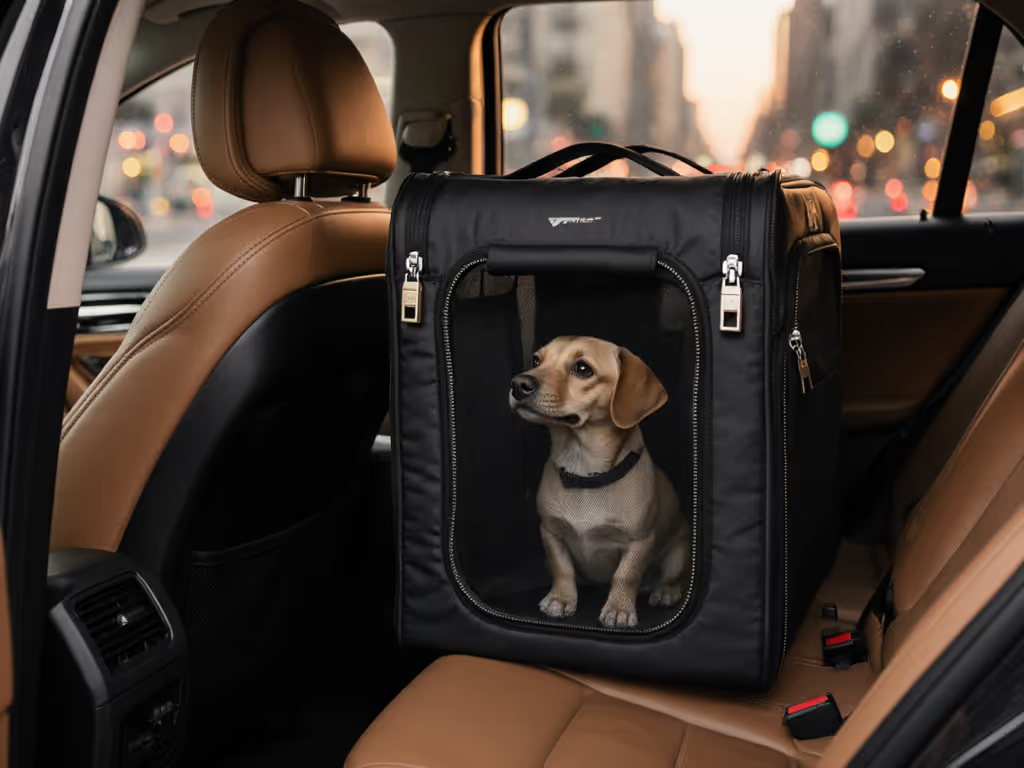
Ride-Share Compliant Pet Carriers: Travel Confidently
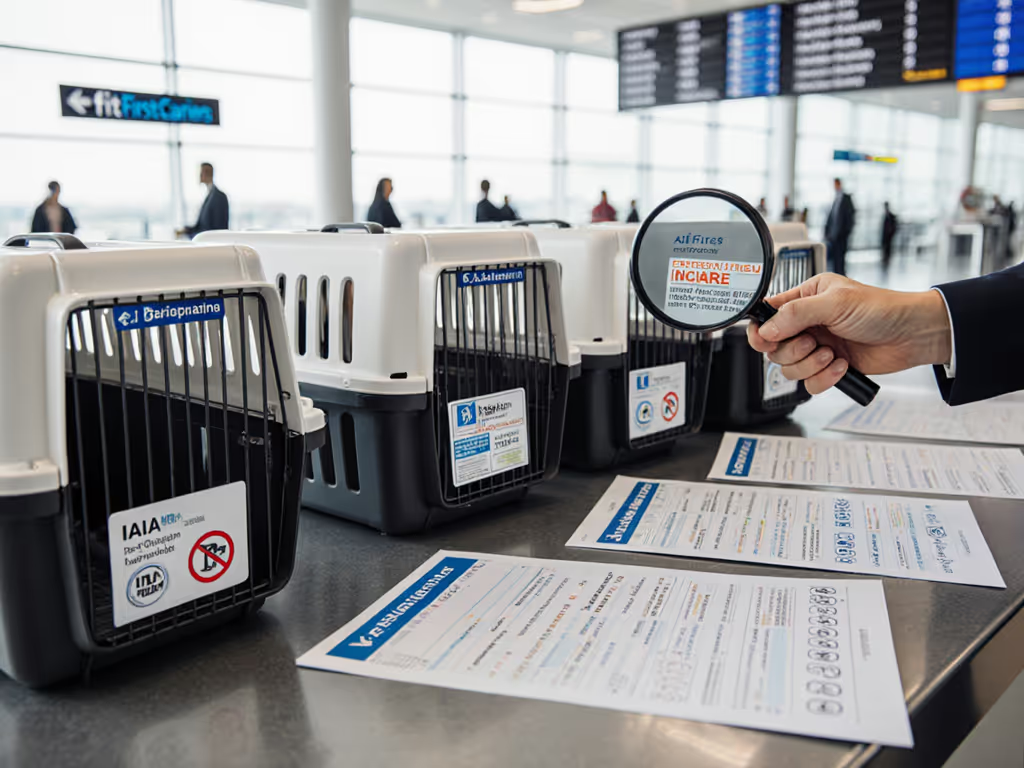
Pet Carrier Certifications Verified: Airline Safety Labels Decoded
